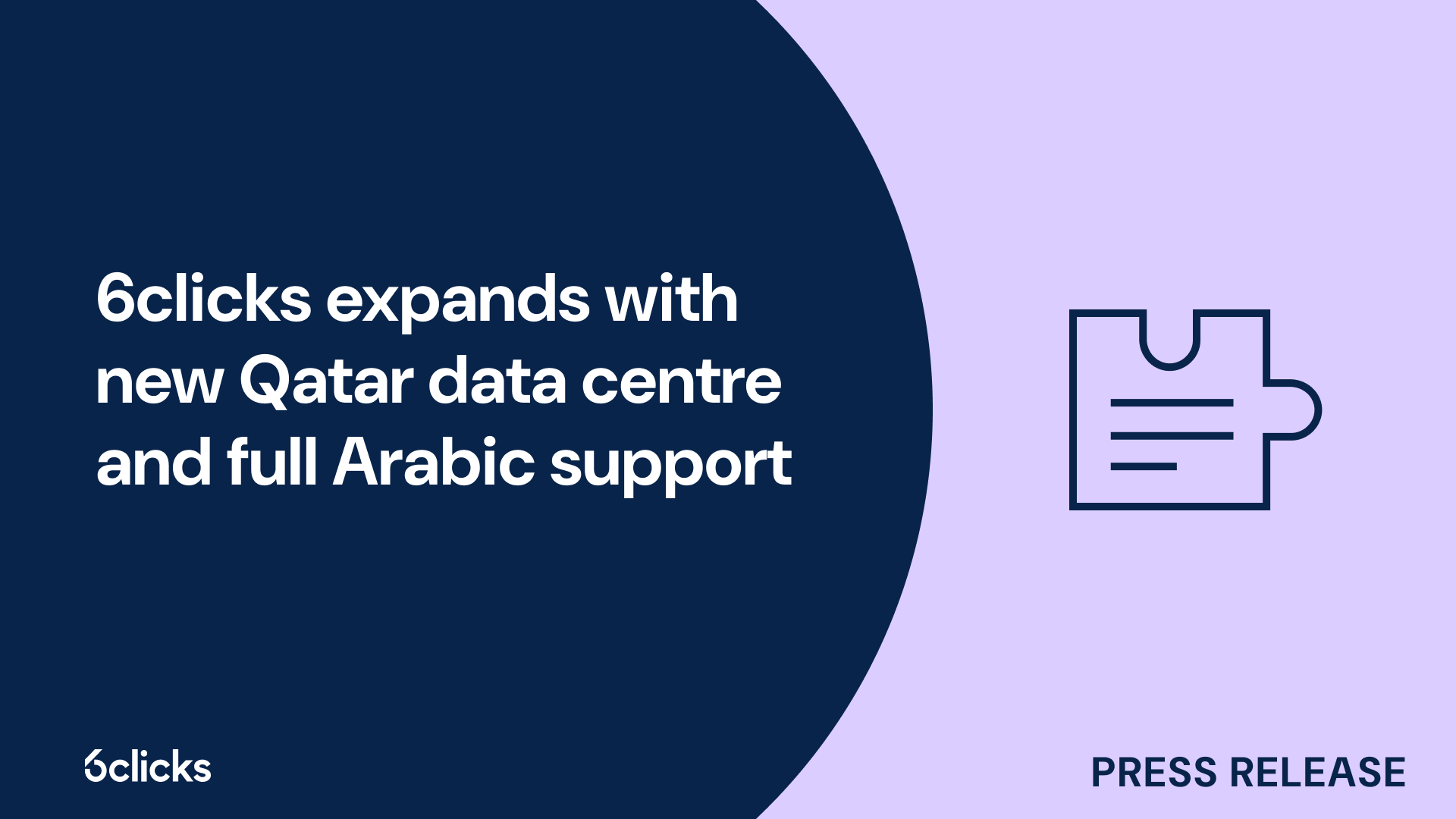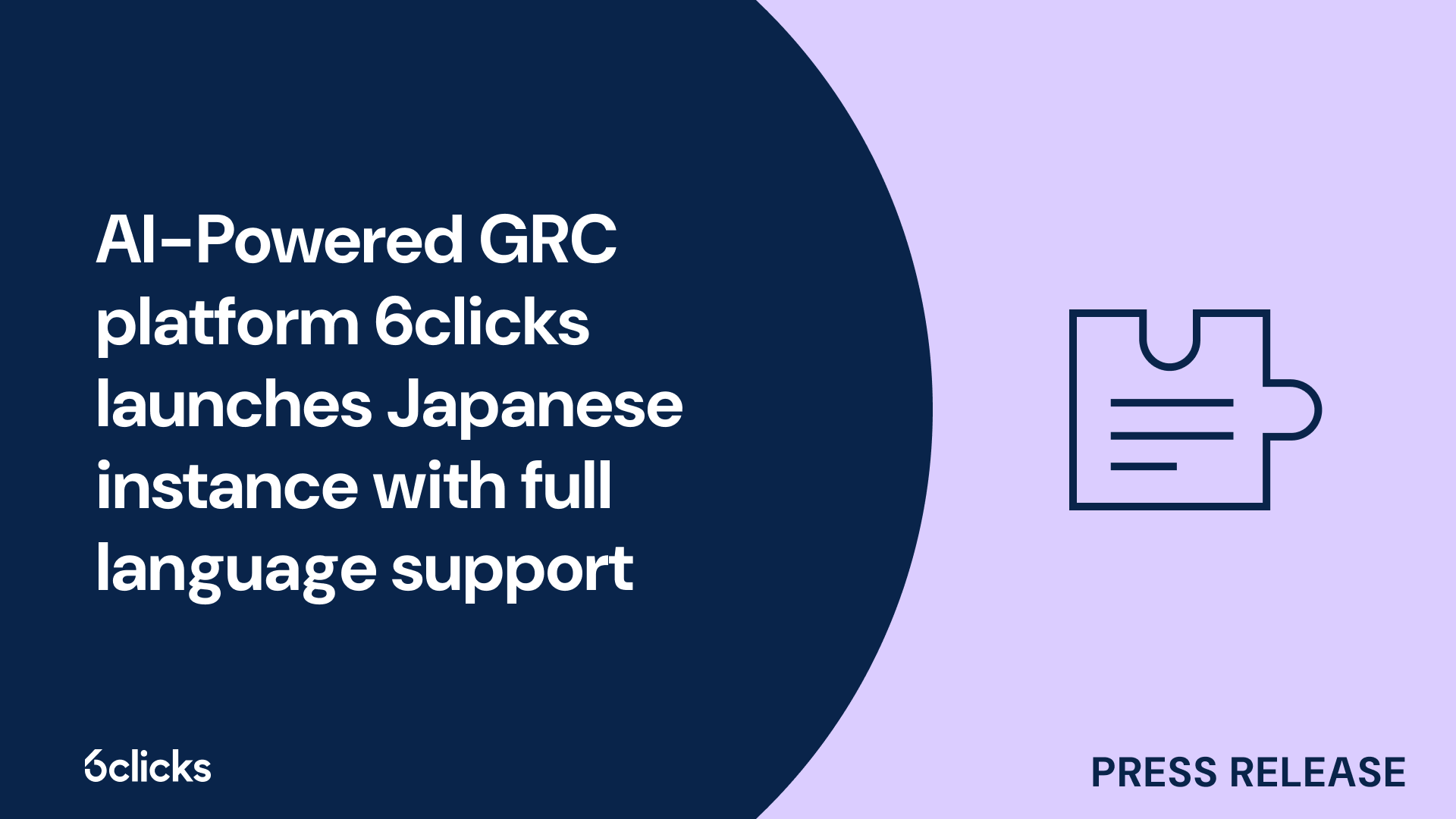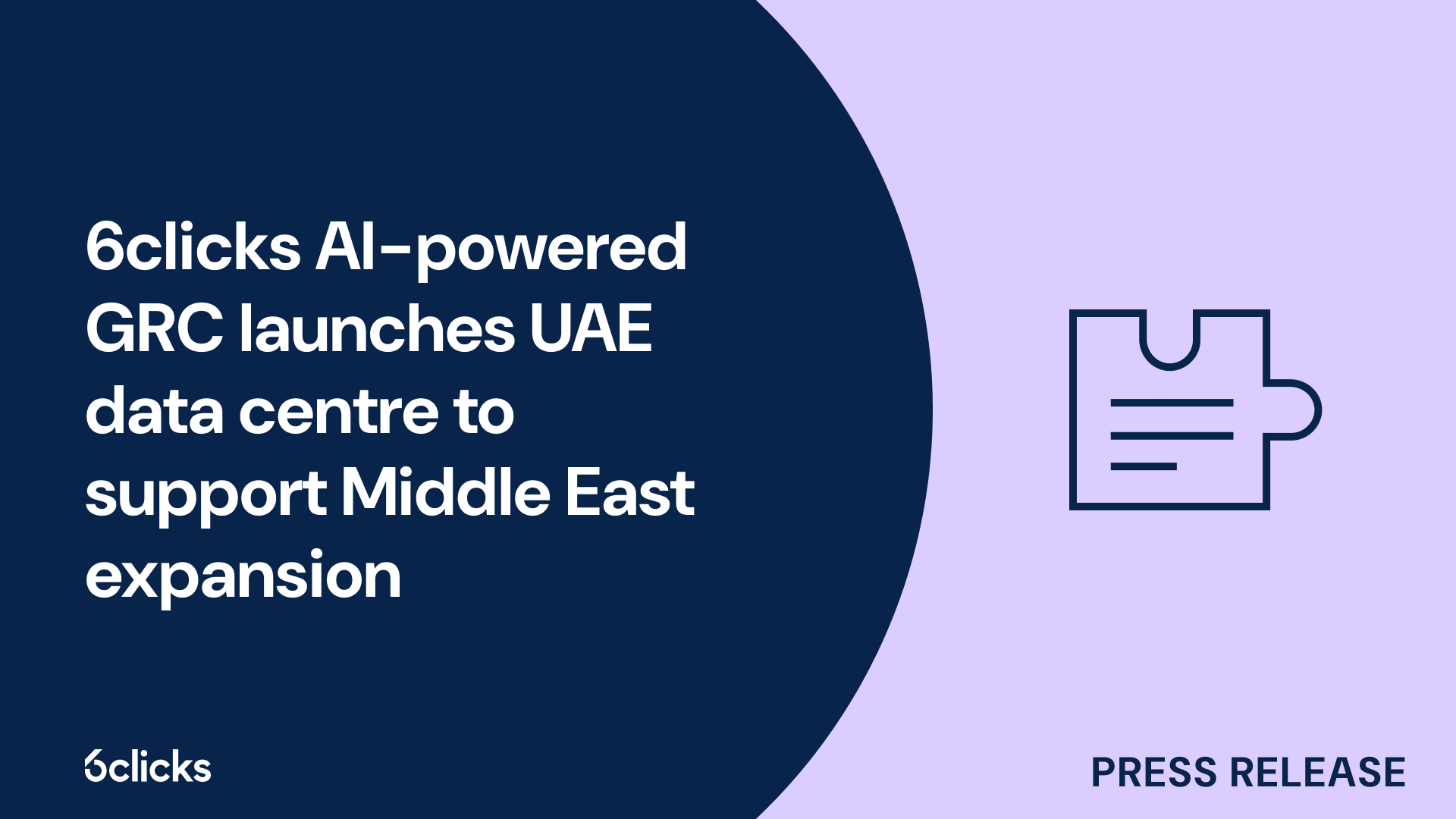Third-Party Risk Management Expert Guide
Get the Third-Party Risk Management Expert Guide to master vendor risk strategies, improve compliance, and safeguard your business. Download now!
-1.png?width=200&height=249&name=Group%20193%20(1)-1.png)
Third-Party Risk Management Expert Guide
What is vendor management?
Vendor management refers to the process of effectively managing the relationships between a company and its vendors. It involves various activities and strategies aimed at ensuring that vendors are selected, contracted, and managed in a way that aligns with the company's business goals and objectives. The goal of vendor management is to establish strong and collaborative relationships with vendors, achieve cost savings, maintain quality standards, and minimize potential risks. Effective vendor management requires establishing clear lines of communication, selecting suitable vendors through a thorough selection process, monitoring and assessing vendor performance, managing vendor contracts and terms, and addressing any issues or concerns that may arise during the vendor relationship. By actively managing their relationships with vendors, businesses can maximize value, improve supply chain efficiency, and enhance customer satisfaction.
Benefits of effective vendor management
Effective vendor management is crucial for businesses to stay competitive in today's rapidly changing market. By effectively managing their vendors, businesses can not only catch up with the latest market trends but also leverage improvement opportunities.
One of the key benefits of effective vendor management is the ability to stay up to date with market trends. Vendors often have access to the latest market information and insights. By maintaining strong vendor relationships and open lines of communication, businesses can tap into this knowledge and stay ahead of the curve.
Furthermore, effective vendor management enables businesses to leverage improvement opportunities. Vendors can often provide valuable feedback and suggestions for enhancing business processes, reducing costs, and increasing efficiency. By actively managing vendor relationships, businesses can identify and seize these improvement opportunities to drive growth and success.
Building long-term relationships with vendors is another significant advantage of effective vendor management. Long-term relationships foster mutual trust and understanding between businesses and vendors. This leads to better collaboration, smoother transactions, and increased accountability. Such strong relationships lay the foundation for successful partnerships that can be beneficial for both parties involved.
Lastly, effective vendor management contributes to providing better quality products. By carefully selecting vendors, setting quality standards, and monitoring supplier performance, businesses can ensure that the products they offer meet or exceed customer expectations. This not only enhances customer satisfaction but also helps businesses maintain their reputation and competitive edge in the market.
Stage 1: defining goals and objectives
Before organizations can effectively manage their vendors, it is crucial to establish clear goals and objectives. This stage involves identifying the business requirements and determining how vendor relationships can contribute to achieving them. By aligning the vendor management strategy with the overall business objectives, organizations can ensure that their vendor relationships are purposeful and beneficial. This stage also involves evaluating the potential risks and rewards associated with vendor partnerships, setting quality standards, and determining cost savings targets. Defining goals and objectives provides a roadmap for effective vendor management and sets the foundation for successful vendor relationships.
Clarify business objectives
Clarifying business objectives is a crucial first step in effectively managing a vendor relationship. This process involves identifying and defining the specific goals and outcomes that the business aims to achieve through its association with the vendor.
To clarify business objectives, it is important to thoroughly understand the current needs of the business. This requires considering factors such as product quality, on-time delivery schedule, customer service, and cost savings. By identifying these needs, businesses can then determine which vendors are best suited to meet their requirements.
Furthermore, defining clear performance metrics is essential. Performance metrics provide measurable criteria against which the vendor's performance can be evaluated. These metrics should align with the business goals and include key performance indicators such as customer satisfaction, delivery time, and financial stability. Clear performance metrics enable businesses to monitor the vendor's performance and ensure that it is in line with their expectations.
Conveying expectations and establishing a mutual understanding with vendors is another critical aspect of managing a vendor relationship. By communicating expectations clearly and openly, businesses can ensure that both parties have a shared understanding of what needs to be achieved. This includes discussing contract terms, quality standards, lines of communication, and any potential risks. Establishing a mutual understanding lays the foundation for a successful and collaborative vendor relationship.
Analyze risk and quality requirements
Analyzing risk and quality requirements is a crucial step in effective vendor management. It involves assessing various factors to ensure that vendors can meet the business's needs and minimize potential risks.
To start, businesses must conduct a comprehensive risk assessment. This involves identifying potential risks that could impact the vendor's ability to deliver products or services. Factors to consider include the vendor's financial stability, their track record in meeting delivery schedules, and any past issues with product quality. By conducting a risk assessment, businesses can evaluate the likelihood and impact of these risks and develop appropriate risk mitigation strategies.
Assessing quality requirements is equally important. This involves evaluating the vendor's past performance in terms of product quality, customer satisfaction, and adherence to agreed-upon quality standards. It also includes scrutinizing the vendor's labor and material sourcing practices to ensure ethical and sustainable approaches.
Additionally, it is essential to analyze the vendor's potential problems with overspending. This requires evaluating the vendor's pricing structure, understanding their cost-saving initiatives, and identifying any potential areas where overspending may occur. By doing so, businesses can negotiate favorable contract terms and avoid unexpected financial burdens.
In some cases, it may be beneficial to consult a risk mitigation specialist. These experts can provide valuable insights and guidance in identifying and managing the potential risks associated with vendor relationships. Their expertise can help refine risk assessment strategies and develop effective risk mitigation plans.
By carefully analyzing risk and quality requirements, businesses can ensure that they select vendors who align with their business goals and minimize potential risks. This proactive approach sets the stage for a successful and mutually beneficial vendor relationship.
Establish performance criteria for vendors
Establishing performance criteria for vendors is crucial in managing vendor relationships effectively. By establishing clear and measurable criteria, businesses can ensure that vendors meet the necessary standards and contribute to the achievement of business goals.
Key performance criteria that should be established for vendors include:
- Quality Standards: Vendors should be evaluated based on their ability to meet defined quality standards consistently. This ensures that the products or services provided align with the business's expectations and customer requirements.
- Cost Savings: Assessing a vendor's ability to provide cost-effective solutions and achieve cost savings is essential. This involves evaluating their pricing structure, cost-saving initiatives, and identifying areas for potential cost reduction.
- Delivery Time: Timely delivery is vital for uninterrupted business operations. Establishing criteria for on-time delivery helps in evaluating a vendor's reliability and ensuring that products or services are delivered within the agreed-upon timeframe.
- Customer Satisfaction: Vendors should be assessed based on customer feedback and satisfaction levels. This includes considering factors like responsiveness, problem-solving abilities, and overall customer service.
Tracking vendor performance against these criteria is essential for mitigating risks and improving the quality of work. Regular performance monitoring and evaluation provide valuable insights into a vendor's strengths and weaknesses, allowing businesses to address any issues promptly. It also helps in identifying areas of improvement, building stronger relationships with vendors, and making informed decisions about vendor selection and retention.
Establishing clear performance criteria and tracking vendor performance not only helps in ensuring smooth operations but also fosters long-term successful vendor relationships.
Set financial expectations
When setting financial expectations for vendors, it is crucial to establish clear and realistic expectations that align with your business goals and requirements. This can be achieved through several steps:
Firstly, incorporate clear financial expectations in the vendor contract. Clearly outline payment terms, pricing structures, and any performance-based incentives or penalties. This ensures that both parties have a shared understanding of the financial expectations from the start.
Secondly, consider your business goals and requirements when setting financial expectations. Identify the desired outcomes and financial objectives you aim to achieve through the vendor partnership. This could include cost reductions, cost savings, or revenue generation. Aligning the financial expectations with your broader business goals will help ensure that the vendor's performance contributes to the overall success of your organization.
Lastly, conduct a thorough financial analysis of the vendor. Evaluate their financial stability, liquidity, profitability, and solvency. This analysis can be done by reviewing their financial statements, conducting credit checks, or requesting references. Additionally, evaluate individual financial ratios and compare them to the supplier's historical performance or industry benchmarks. This will provide insights into their financial health and ability to meet the set expectations.
By following these steps, you can set realistic and achievable financial expectations for vendors, promoting a mutually beneficial and successful vendor relationship.
Stage 2: selecting and evaluating vendors
Selecting the right vendors for your business is crucial to ensuring successful vendor relationships and achieving your business objectives. This stage involves a careful evaluation of potential vendors based on various criteria, such as their financial stability, product quality, delivery time, and customer service. It is essential to establish clear selection criteria and a standardized vendor evaluation process to streamline decision-making and mitigate potential risks. Conducting thorough research, requesting proposals, and assessing vendor capabilities will enable you to make informed decisions and select vendors who align with your specific needs and requirements. The evaluation phase also involves considering factors like the supplier's industry experience, reputation, and their ability to meet your quality standards. Ultimately, this stage sets the foundation for establishing positive and mutually beneficial relationships with vendors, supporting the overall success of your organization.
Create a procurement team
In today's business landscape, managing vendor relationships efficiently is paramount to the success of any organization. To effectively handle these relationships and achieve business objectives, it is crucial to create a strong procurement team. This centralized team plays a pivotal role in the vendor management process, ensuring coordination, collaboration, and minimizing potential risks.
A procurement team serves as the primary point of contact between the business units and vendors, streamlining communication and fostering effective collaboration. By centralizing vendor management responsibilities, this team can develop and implement a comprehensive vendor management strategy that aligns with the organization's goals and objectives.
One of the key benefits of a procurement team is its ability to coordinate vendor selection effectively. By establishing clear criteria and processes for selecting vendors, the team can ensure that potential vendors are thoroughly assessed based on factors such as supplier performance, financial stability, and product quality. This ensures that only reliable and trusted vendors become part of the organization's supplier base.
Furthermore, with a centralized team in place, the procurement process becomes more efficient. The team can negotiate favorable contract terms, monitor vendor performance against key performance indicators, and address any potential supply chain disruptions. By actively managing vendor relationships, the procurement team can optimize cost savings, improve delivery times, and ultimately enhance customer satisfaction.
In essence, creating a procurement team is indispensable for efficient vendor management. By centralizing the responsibility and expertise in a single team, businesses can effectively coordinate with vendors, minimize risks, and unlock new opportunities for growth and success.
Develop supplier selection criteria
In order to develop supplier selection criteria, it is important to consider various factors that align with the organization's business goals and objectives. These criteria will help identify suppliers that can deliver the desired quality, value, delivery, and customer service. Additionally, other aspects such as the supplier's financial stability, sustainability practices, and compliance with regulations should also be taken into account.
Quality is a critical factor to consider when selecting a supplier. They should have a track record of delivering high-quality products or services that meet the organization's standards. This can be evaluated through previous client references, product certifications, or by conducting audits.
Value relates to the supplier's ability to offer competitive pricing and favorable terms. It is important to thoroughly review the suppliers' pricing structures and compare them with market rates to ensure the organization is receiving the best value for their investment.
Delivery is another crucial aspect to consider. Suppliers should have a proven track record of delivering products or services on time and within agreed-upon schedules. This can be assessed by reviewing their delivery history and assessing their capabilities to meet the organization's demands.
Customer service is also an important criterion to evaluate when selecting suppliers. They should demonstrate a commitment to understanding and meeting the organization's specific requirements and providing effective communication channels. This can be gauged through interactions during the sourcing process or by seeking feedback from existing clients.
Identify suitable vendors using sourcing tools
In the process of identifying suitable vendors, it is important to utilize various sourcing tools to streamline the selection process. These tools help in evaluating potential vendors based on the specific criteria mentioned in the background information.
- Vendor directories: These directories provide a comprehensive database of vendors and their offerings. They allow businesses to search for vendors based on their industry, product/service, location, and other relevant criteria.
- Online marketplaces: Platforms like Alibaba, Amazon Business, and ThomasNet facilitate the sourcing process by connecting businesses with a wide range of suppliers. These platforms often provide filters and search options to narrow down the list of potential vendors based on specific criteria.
- Request for Proposal (RFP) templates: RFP templates help businesses create structured documents that outline their requirements and ask potential vendors to provide detailed proposals. These templates help compare vendors based on their ability to meet specific criteria outlined in the RFP.
- Supplier databases: These databases, often maintained by procurement organizations or industry associations, provide information on registered suppliers. They may include details on the supplier's capability, certifications, financial stability, and past performance.
- Professional networks: Leveraging professional networks like LinkedIn can provide access to a vast pool of potential vendors. These networks allow businesses to connect with vendors, review their profiles, and initiate discussions.
By utilizing these sourcing tools, businesses can efficiently evaluate and select suitable vendors based on the criteria outlined in the background information.
Conduct background checks on vendors
Conducting background checks on vendors is a crucial step in the vendor management process. It helps businesses assess vendor risk and ensure that the selected vendors can meet the required volume and fulfill the entire contract. By reviewing a vendor's financials and checking references, businesses can gain valuable insights into the vendor's financial stability, capability, and past performance.
Assessing vendor risk is essential to minimize potential disruptions in the supply chain and ensure the smooth operation of business processes. Background checks allow businesses to gather and compare numbers and terms through requests for proposals (RFPs) or invitations for bid. These documents outline the business requirements and expectations, helping to assess vendor compatibility.
Utilizing sourcing tools is another vital aspect of conducting background checks. These tools enable businesses to identify suitable vendors based on various criteria such as industry, product/service, location, and certifications. Sourcing tools provide a comprehensive database of vendors, making it easier to narrow down the list of potential vendors and select the most suitable ones for further evaluation.
Negotiate contract terms with preferred vendors
When negotiating contract terms with preferred vendors, it is crucial to establish mutually beneficial terms that align with the business goals and objectives. This process involves a careful evaluation and discussion of various factors to ensure a successful vendor relationship.
One important aspect of contract negotiation is identifying and addressing potential risks. This includes outlining the specific risks associated with the vendor's products or services, as well as any potential supply chain disruptions. By thoroughly understanding these risks, businesses can implement appropriate mitigation strategies and ensure the vendor is capable of meeting the required quality standards.
In addition to risk assessment, negotiating security expectations is vital to protect sensitive information and comply with industry regulations. This involves establishing guidelines for data protection, confidentiality, and adherence to cybersecurity protocols. It is also important to gain visibility into the vendor's subcontractors and ensure they comply with the same security measures.
Agreeing upon performance key performance indicators (KPIs) is another crucial aspect of contract negotiation. These KPIs define the expected level of service or product quality, delivery time, and customer satisfaction. By setting clear performance expectations, businesses can effectively measure the vendor's performance and address any issues that may arise.
Finally, defining the financial terms is essential to establish a clear understanding of payment schedules, pricing structures, and cost savings. This includes discussing payment terms, any applicable discounts or rebates, and procedures for resolving any financial disputes that may arise.
Monitor supplier performance
Monitoring supplier performance is crucial for effective vendor management. By regularly evaluating their adherence to contract standards, businesses can ensure that suppliers are meeting their obligations and delivering the expected products or services.
One approach to monitor supplier performance is by tracking metrics and key performance indicators (KPIs) that are relevant to the contract. These metrics could include on-time delivery, product quality, customer satisfaction, and financial stability. By regularly tracking these metrics, businesses can identify any deviations from the agreed-upon standards and address them promptly.
Regular communication and feedback are also important in monitoring supplier performance. This involves maintaining open lines of communication with suppliers and holding regular performance review meetings. During these meetings, businesses can discuss any issues or concerns and work collaboratively with suppliers to find solutions.
Promptly addressing any performance issues is crucial to maintain a productive vendor relationship. This involves identifying the root cause of the issue, discussing it with the supplier, and working together to implement corrective actions. Addressing performance issues promptly helps to mitigate potential risks and prevent further disruptions to the supply chain.
Stage 3: managing vendor relationships
One of the key stages in effectively managing vendors is building and maintaining strong relationships with them. Managing vendor relationships involves activities such as tracking disputes, collaborating with suppliers, and conducting performance check-ins. This stage, also known as vendor relationship management (VRM), is essential for the success of any business.
Tracking disputes is a crucial aspect of VRM. It involves monitoring and resolving any issues or conflicts that may arise during the vendor relationship. By addressing disputes promptly and effectively, businesses can minimize potential risks and ensure smooth operations.
Collaborating with suppliers is another important activity in managing vendor relationships. This involves maintaining open lines of communication, fostering trust, and working together to achieve common goals. Regular communication and collaboration help to build a strong partnership and ensure that both parties are aligned in terms of business objectives.
Conducting performance check-ins is also vital in managing vendor relationships. Regularly evaluating supplier performance against key performance indicators (KPIs) helps businesses to assess whether vendors are meeting the agreed-upon standards. This enables businesses to identify any areas of improvement and work collaboratively with vendors to implement necessary changes.
Having a sound contract management strategy is essential for effective vendor management. This strategy ensures that contract terms are clearly defined, understood, and adhered to by both parties. It helps to establish expectations, outline responsibilities, and provide a framework for managing vendor relationships.







